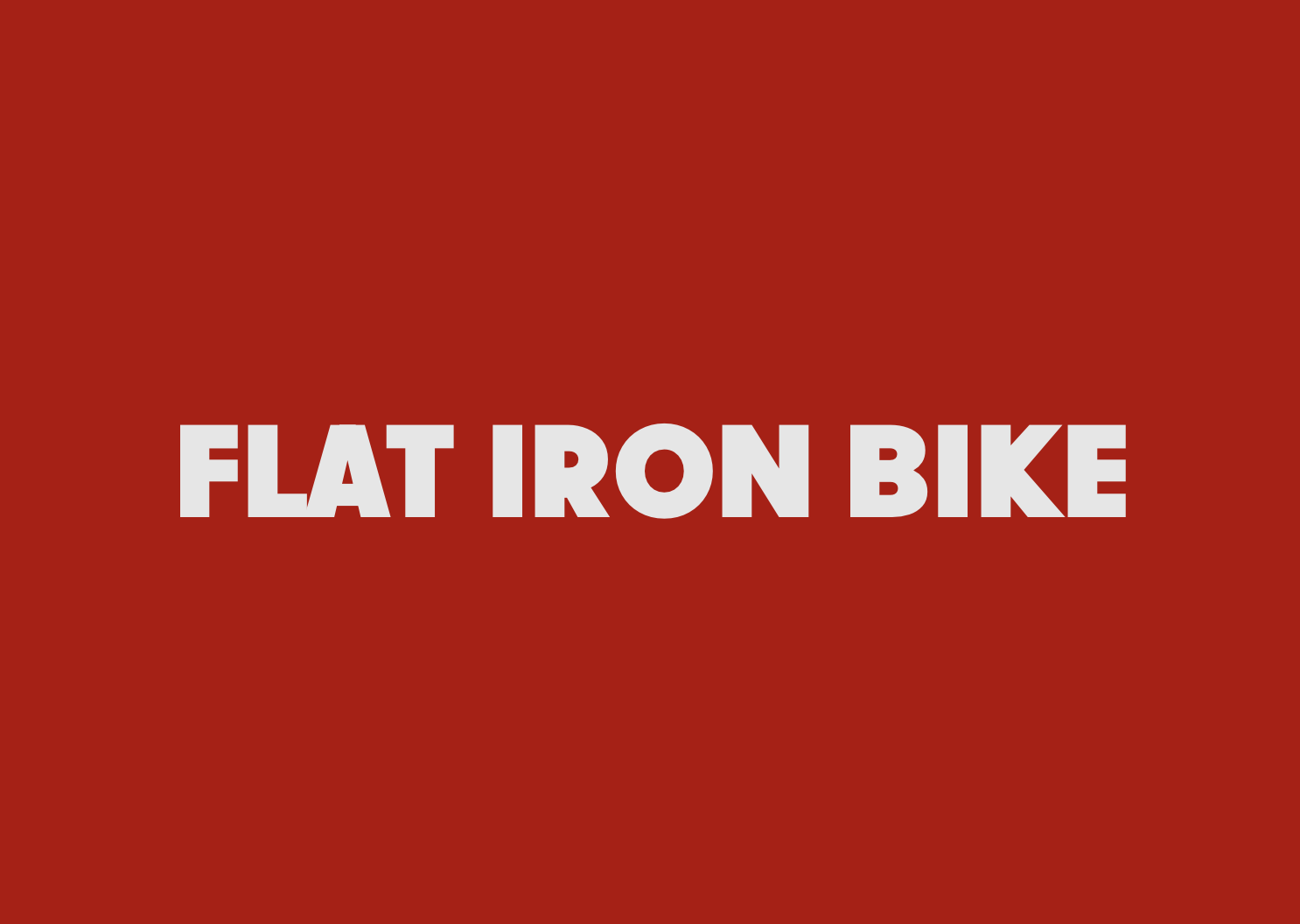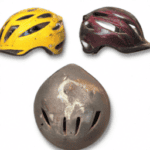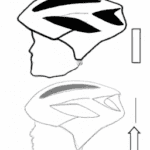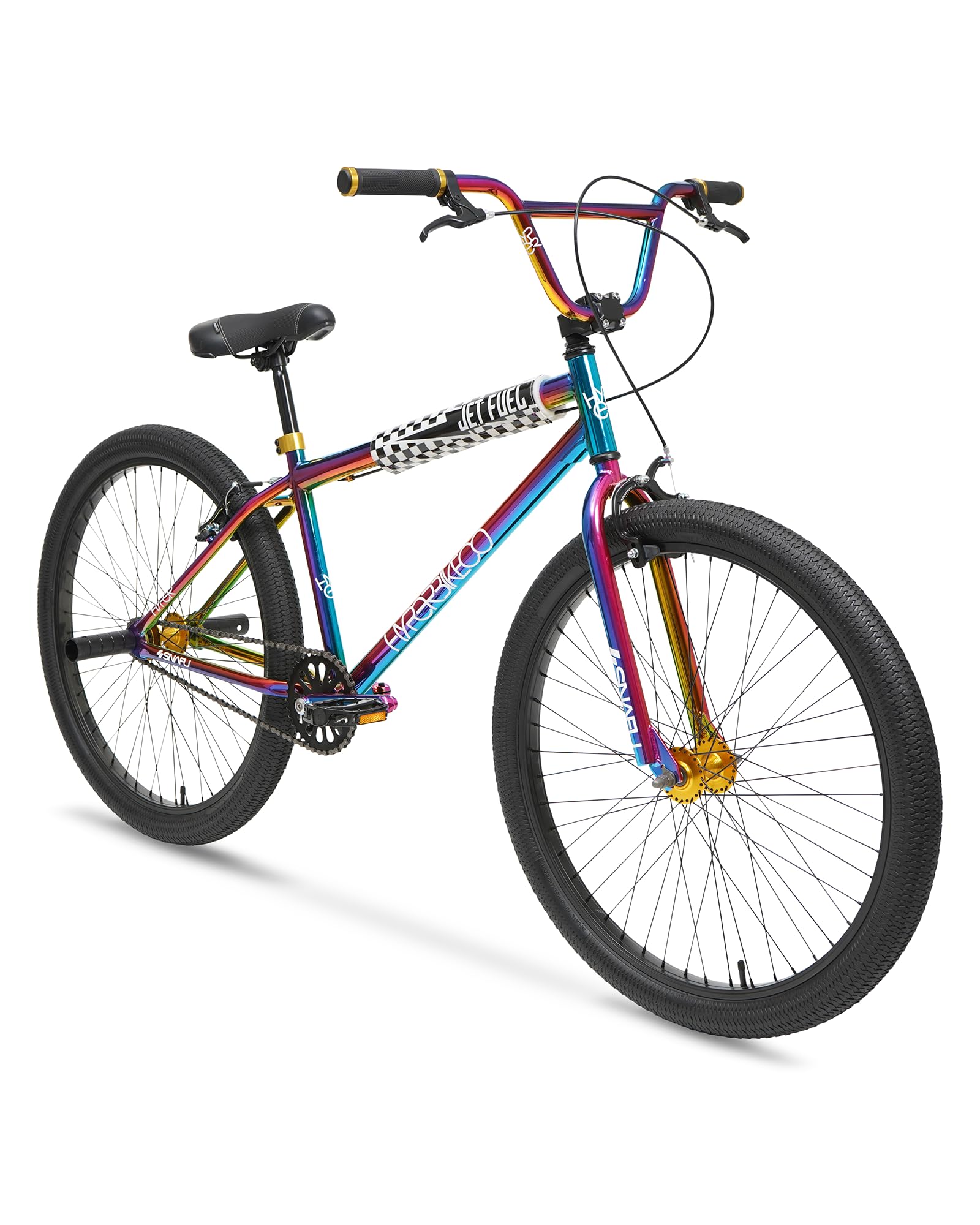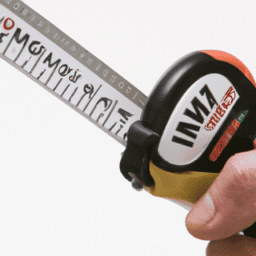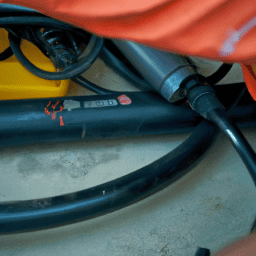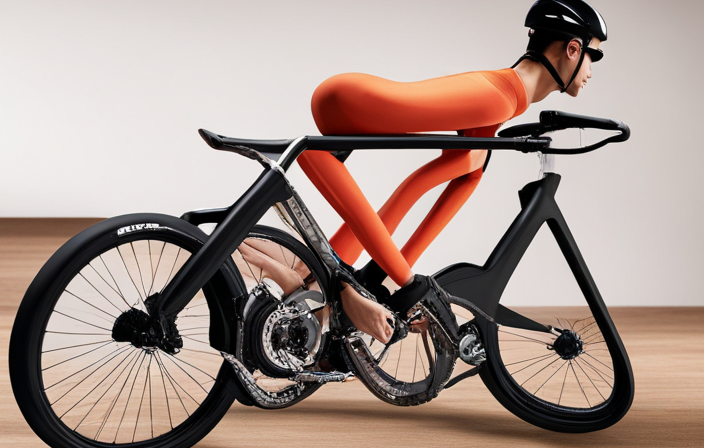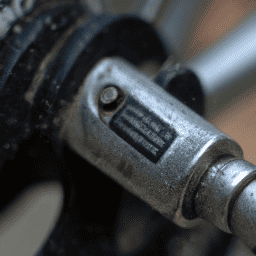Bike
How Often To Replace Bicycle Helmet

Can you recall when you last got a new bike helmet? Perhaps you acquired it several years back and haven’t really considered it much afterward. Yet, it’s important to remember that helmets don’t have an infinite lifespan and need to be swapped out after being used for a while.
For example, imagine you are a cyclist who rides 3-4 times a week and has been using the same helmet for the past 5 years. That helmet has likely experienced a lot of wear and tear and may no longer offer adequate protection in the event of an accident.
Replacing your helmet on a regular basis is essential for your safety while cycling. But how often should you replace it? The answer is not straightforward and can vary based on several factors.
In this article, we will explore the lifespan of a bicycle helmet, the factors that affect how long it lasts, and provide general guidelines for when to replace your helmet. We will also discuss how to properly care for your helmet and the importance of investing in a new one when the time comes.
Key Takeaways
- Bicycle helmets have a limited lifespan and should be replaced after a certain amount of use, typically every five years or after an accident.
- Signs of wear and tear, such as cracks, dents, and damage to the interior foam, should be monitored to determine when a helmet needs to be replaced.
- Proper cleaning, maintenance, and storage are crucial to extending the lifespan of a helmet and ensuring it provides adequate protection.
- Investing in a high-quality helmet meeting safety standards set by CPSC or Snell Memorial Foundation is important to prevent life-altering injuries.
Understanding the Lifespan of a Bicycle Helmet
So, how long does a bike helmet actually last? Let’s break it down.
Helmet durability and impact resistance are major factors that determine the lifespan of a helmet. Over time, the foam padding, which is responsible for absorbing impact, will naturally deteriorate and lose its effectiveness. This is why it’s important to replace your helmet after a significant impact or after several years of use.
Helmet testing standards and industry regulations also play a role in determining how long a helmet will last. Helmets are designed to meet specific safety standards, and these standards are constantly evolving and improving. For example, the CPSC (Consumer Product Safety Commission) requires helmets to pass impact tests at various speeds and angles before they can be sold.
As new technologies and testing methods are introduced, older helmets may become outdated and less effective.
As you can see, the lifespan of a bike helmet depends on a variety of factors. In the next section, we’ll take a closer look at some of the specific factors that can affect how long your helmet will last.
Factors That Affect How Long a Helmet Lasts
When you’re zooming down the road on your trusty steed, your helmet is the only thing standing between your noggin and the unforgiving pavement. As you ride, your helmet is exposed to the elements, sweat, bumps, and scrapes – all of which can take a toll on its effectiveness over time. Here are three factors that affect how long a helmet lasts:
-
Helmet materials: The materials used in the construction of a helmet can affect its lifespan. For example, helmets made of carbon fiber or Kevlar tend to last longer than those made of polycarbonate or other plastics.
-
Impact severity: The severity of impacts a helmet experiences can also affect its lifespan. A helmet that has been involved in a severe impact may need to be replaced even if there are no visible signs of damage.
-
Frequency of use: The more often you use your helmet, the faster it will wear out. If you ride your bike every day, you may need to replace your helmet more frequently than someone who only rides occasionally.
When it comes to helmet safety, it’s important to know when to replace your helmet. Now that you understand the factors that affect how long a helmet lasts, let’s discuss general guidelines for replacing your helmet.
General Guidelines for Replacing Your Helmet
As a rider, you want to ensure your head is protected at all times, which is why it’s crucial to keep in mind general guidelines for when it’s time to swap out your trusty helmet.
The general rule of thumb is to replace your helmet every five years, regardless of whether or not it has sustained any damage. This is because the materials used in helmets can deteriorate over time, which can affect the level of protection they provide.
Aside from the five-year rule, there are other signs of wear and tear that you should be aware of. These include cracks, dents, and scratches on the exterior of the helmet, as well as any damage to the interior foam.
If you’ve been in an accident, even a minor one, it’s important to replace your helmet immediately, as it may have sustained damage that isn’t visible to the naked eye.
Keeping these guidelines in mind will ensure that you’re always riding with a helmet that’s in good condition and providing you with the protection you need.
As you consider these guidelines, it’s important to also know how to care for your bicycle helmet.
How to Care for Your Bicycle Helmet
To ensure your bicycle helmet lasts as long as possible, you must take care of it properly. Cleaning and maintenance should be done regularly, using mild soap and water to clean the outer shell and a soft cloth to wipe down the interior.
Proper storage is also crucial. Keeping your helmet in a cool, dry place away from direct sunlight and extreme temperatures will prevent damage and deterioration.
Remember, the better you care for your helmet, the safer you’ll be on your rides.
Cleaning and Maintenance
You should regularly clean and maintain your bicycle helmet to ensure its longevity, almost like giving it a gentle spa treatment to keep it looking and feeling fresh.
Cleaning techniques can vary depending on the material of the helmet, but most can be wiped down with a damp cloth and mild soap. Avoid using harsh chemicals or solvents as they can damage the helmet’s integrity. It’s recommended to clean your helmet every time you ride, especially if you sweat a lot or ride in dusty or dirty conditions.
In addition to regular cleaning, maintenance of your helmet is also important. Check the straps and fasteners regularly to ensure they are secure and in good condition. If any part of the helmet becomes damaged, such as a crack or dent, it’s important to replace it immediately.
Proper maintenance and cleaning can extend the life of your helmet, but it’s important to remember that helmets do have a limited lifespan. This leads us to the next section about proper storage to further ensure the longevity of your helmet.
Proper Storage
When storing your helmet, make sure to keep it in a cool and dry place to prevent any damage or deterioration. Here are some helmet storage solutions that can help keep your helmet in good condition:
- Hang your helmet on a hook or helmet holder to prevent it from getting crushed.
- Use a helmet bag to protect it from dust and scratches.
- Keep your helmet away from direct sunlight to prevent fading and weakening of the materials.
- Avoid storing your helmet near any chemicals or solvents that can damage the shell or lining.
- Consider using helmet odor control techniques such as placing a dryer sheet or activated charcoal inside the helmet to absorb any unpleasant smells.
Proper storage can help prolong the lifespan of your helmet, but eventually, you’ll need to invest in a new one. Knowing when to replace your helmet is crucial for your safety, and we’ll discuss more about this in the next section.
Investing in a New Helmet
If you’re serious about protecting your noggin, it’s time to splurge on a brand new helmet.
Helmet options are plentiful, with a range of materials, shapes, and sizes to choose from.
When investing in a new helmet, first consider the type of riding you’ll be doing and the level of protection you require. Road cyclists may opt for a lightweight, aerodynamic helmet, while mountain bikers may prefer a more rugged, full-coverage option.
Cost considerations are also important when investing in a new helmet. While it can be tempting to go for the cheapest option available, keep in mind that a higher price tag often signifies better materials, construction, and safety features.
Look for helmets that meet safety standards such as those set by the Consumer Product Safety Commission (CPSC) or Snell Memorial Foundation.
Remember, a helmet is a small price to pay for the protection it provides, and investing in a high-quality helmet can mean the difference between a minor bump on the head and a life-altering injury.
Frequently Asked Questions
Can I still use my helmet if it hasn’t been involved in any crashes but is over the recommended lifespan?
It is not recommended to continue using a helmet beyond its expiration date due to safety concerns. While there are alternatives to replacing a helmet after its recommended lifespan, they may not provide the same level of protection.
How can I tell if my helmet has been damaged from a previous crash or impact?
Yo, it’s important to inspect your helmet for damage after any impact. Look for cracks, dents, or any changes in shape. Use your fingers to feel for soft spots. When in doubt, replace it.
Is it safe to buy a used bicycle helmet from someone else?
When considering buying a used bicycle helmet, hygiene concerns must be taken into account. It is crucial to know the helmet’s history to determine if it has been involved in a previous crash or impact. Additionally, helmets have a limited lifespan and should be replaced accordingly.
Can I replace just the helmet straps or padding instead of buying a whole new helmet?
Before replacing helmet components, ensure that they meet safety standards. Replace worn or damaged straps or padding as needed. Consider using helmet repair services for more extensive repairs.
How do I know if the helmet I’m considering buying fits properly?
To ensure proper helmet fit, measure your head size with a tape measure. The helmet should sit level on your head and fit snugly, with no gaps between the helmet and your head. Adjust the straps for a secure fit.
Conclusion
Congratulations, you’ve made it to the end of this article on how often to replace your bicycle helmet.
By now, you should have a good understanding of the factors that affect the lifespan of your helmet, as well as some general guidelines for when it’s time to invest in a new one.
Think of your helmet like a suit of armor: it’s there to protect you when you need it most. Just like a knight wouldn’t wear a damaged suit of armor into battle, you shouldn’t wear a damaged helmet on your bike.
So, take care of your helmet, inspect it regularly, and replace it when necessary. By doing so, you’ll be doing your part to ensure that you stay safe while enjoying all the benefits that cycling has to offer.
Olivia’s writing is not only informative but also inspiring. She has a knack for telling stories that capture the essence of cycling and the joy it brings to people’s lives. Her writing has been praised by readers and industry experts alike for its clarity, depth, and authenticity.
In addition to her writing, Olivia is also an avid cyclist. She enjoys exploring new trails and routes and has participated in several cycling events and races. Her first-hand experience with cycling gives her a unique perspective on the sport, reflected in her writing.
Overall, Olivia is a talented writer passionate about cycling and dedicated to producing high-quality content for FlatironBike. Her contributions to the magazine have helped make it a go-to source for cycling enthusiasts worldwide.
Bike
How Much Psi In Bicycle Tires
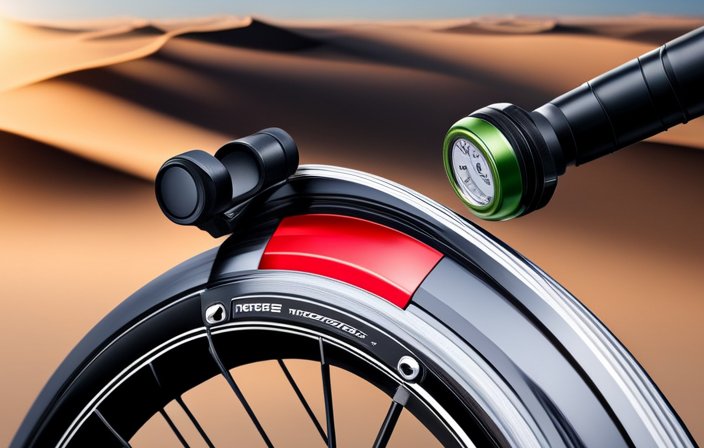
Have you ever experienced the annoyance of cycling on tires that aren’t fully inflated? It feels as though you’re pedaling in quicksand, doesn’t it?
Well, fear not! In this informative article, we will explore the crucial topic of tire pressure in bicycles. From the ideal psi for different types of bikes to the factors affecting tire pressure, we’ll cover it all.
So, saddle up and get ready to discover the secrets to a smoother and more efficient ride. Let’s dive in!
Key Takeaways
- Underinflated tires can lead to decreased stability, reduced responsiveness, increased rolling resistance, and compromised control.
- Overinflated tires can result in a harsh and uncomfortable ride, decreased traction and handling, and increased risk of punctures and blowouts.
- It is important to find the optimal tire pressure for specific conditions, balancing comfort and performance.
- Regularly checking and adjusting tire pressure using a reliable bicycle pump with a pressure gauge can improve bike handling, speed, and performance, and also prevent under or over-inflation.
The Importance of Properly Inflated Bicycle Tires
Properly inflated bicycle tires are crucial for a smooth and safe ride. Balancing safety and optimizing performance, maintaining the correct tire pressure is essential.
When the tires are inflated to the recommended psi (pounds per square inch), it ensures that the bike handles well on different surfaces and provides better traction. The right tire pressure also helps to prevent flats and reduces the risk of blowouts, which can be dangerous, especially when riding at higher speeds.
Additionally, properly inflated tires improve energy efficiency, making it easier to pedal and reducing the strain on your muscles. Neglecting tire pressure can lead to decreased control, poor handling, and even accidents.
Now, let’s delve into the factors affecting tire pressure and how to determine the optimal psi for your bicycle.
Factors Affecting Tire Pressure
Make sure you consider the factors that can impact your tire pressure.
Several factors can affect the tire pressure of your bicycle, including temperature, rider weight, and terrain.
Temperature changes can cause the air inside the tires to expand or contract, leading to fluctuations in tire pressure.
Additionally, rider weight plays a role in determining the optimal tire pressure. Heavier riders may require higher tire pressure to support their weight and prevent pinch flats, while lighter riders may need lower tire pressure for a smoother ride.
The terrain you ride on also affects tire pressure. For example, off-road trails with rough surfaces may require lower tire pressure to improve traction and absorb shocks. On the other hand, smooth road surfaces typically require higher tire pressure for better rolling resistance and efficiency.
When considering the recommended psi for road bikes, it is important to take these factors into account.
Recommended PSI for Road Bikes
To ensure optimal performance and safety while riding your road bike, it’s important to consider the recommended tire pressure. Balancing traction and minimizing rolling resistance are key factors in determining the ideal PSI for road bikes. The recommended tire pressure varies depending on factors such as rider weight, tire width, and road conditions. A higher PSI provides less rolling resistance, allowing for faster speeds on smooth pavement. However, it may sacrifice comfort and traction, especially on rough roads. On the other hand, a lower PSI improves traction and absorbs road vibrations better, but it may increase the risk of pinch flats. To find the right balance, you can refer to the table below, which illustrates the recommended PSI range based on tire width:
| Tire Width (mm) | Recommended PSI Range |
|---|---|
| 23 | 100-130 |
| 25 | 90-120 |
| 28 | 80-110 |
Considering tire width and its impact on tire pressure is crucial for optimizing performance and safety on the road. Now, let’s transition to the recommended PSI for mountain bikes.
Recommended PSI for Mountain Bikes
For a smooth and efficient ride on your mountain bike, you’ll want to find the recommended tire pressure. Maintaining the proper mountain bike tire pressure is crucial for optimal performance and control on rugged terrains. Here are some tire pressure recommendations to consider:
- Tire pressure should be adjusted based on the rider’s weight and preferences.
- Higher tire pressure can result in decreased rolling resistance and better efficiency on smooth trails.
- Lower tire pressure provides better traction and control on rough and technical terrains.
- It is important to find the right balance between grip and rolling resistance by experimenting with different pressures.
Now, let’s move on to discussing the recommended psi for hybrid bikes.
Recommended PSI for Hybrid Bikes
Finding the right tire pressure for hybrid bikes is essential for a comfortable and efficient ride. When it comes to hybrid bikes, the recommended PSI can vary depending on the type of terrain you will be riding on.
For gravel bikes, it is generally recommended to have a lower tire pressure. This allows for better traction and control on loose surfaces. However, it’s important to find a balance as too low of a tire pressure can increase the risk of pinch flats.
On the other hand, higher tire pressures are typically recommended for smoother surfaces to reduce rolling resistance and increase efficiency. It’s important to note that tire pressure has a significant impact on ride quality, affecting both comfort and performance.
Transitioning into the subsequent section about recommended PSI for commuter bikes, it’s important to consider the specific needs and conditions of your daily commute.
Recommended PSI for Commuter Bikes
When commuting on your hybrid bike, it’s important to adjust your tire pressure based on the specific needs and conditions of your daily route. Finding the right tire pressure is crucial for a smooth and safe ride. Here are three key factors to consider when determining the optimal tire pressure for your commuter bike:
-
Surface Conditions: If you encounter rough roads or uneven terrain during your commute, it’s advisable to increase your tire pressure slightly. This helps minimize the risk of pinch flats and provides better stability.
-
Load Capacity: Take into account the weight you’re carrying on your bike, including bags or panniers. Heavier loads require higher tire pressure to maintain optimal performance and prevent excessive rolling resistance.
-
Rider Preference: Your personal comfort and handling preferences also play a role in tire pressure selection. Experiment with different pressures to find the balance between a smooth ride and responsive handling.
Adjusting your tire pressure correctly can greatly impact your bike’s handling and overall performance. Now, let’s move on to discussing the recommended PSI for BMX bikes.
Recommended PSI for BMX Bikes
Determining the recommended tire pressure for BMX bikes can greatly enhance their performance and handling. The recommended psi for dirt bikes is typically higher than that of commuter bikes due to the different terrain and riding style.
BMX bikes are designed for jumps, tricks, and high impact riding, so having the correct tire pressure is crucial. Higher tire pressure provides better responsiveness and faster rolling speed on smooth surfaces, while lower tire pressure offers improved traction and shock absorption on rough terrains.
Finding the ideal psi for your BMX bike requires some experimentation, as it can vary depending on your weight, riding style, and personal preference. It is important to note that tire pressure directly affects the bike’s performance, so regular checks and adjustments are necessary to maintain optimal performance and safety levels.
How to Check and Adjust Tire Pressure
To ensure optimal performance and safety levels, it’s important to regularly check and adjust the tire pressure of your BMX bike. Proper tire pressure is crucial for maintaining control, improving traction, and preventing flats. Checking pressure is a simple process that involves using a tire gauge to measure the amount of air inside the tire. The recommended PSI for BMX bikes is typically between 35 and 60. Adjusting the pressure is done by adding or releasing air using a pump with a pressure gauge. It’s important to follow the manufacturer’s guidelines for the specific tire and bike model. Riding with underinflated tires can negatively affect handling and increase the risk of pinch flats. By regularly checking and adjusting tire pressure, you can ensure a smooth and safe ride. Transitioning into the next section, let’s explore the effects of underinflated tires.
The Effects of Underinflated Tires
Underinflated tires can negatively impact a BMX bike’s handling and increase the risk of pinch flats. Riding on underinflated tires poses dangers that riders should be aware of.
Here are three ways underinflated tires affect handling and control:
-
Decreased stability: With lower tire pressure, the bike becomes less stable, making it harder to maintain balance, especially during sharp turns or maneuvers.
-
Reduced responsiveness: Underinflated tires result in sluggish handling, making it difficult to quickly respond to obstacles or changes in terrain.
-
Increased rolling resistance: The tires’ surface area in contact with the ground increases when underinflated, causing more friction. This leads to a decrease in speed and efficiency, making pedaling more strenuous.
Riding on underinflated tires can significantly impact your biking experience, compromising your control and putting you at risk. Transitioning into the next section on the effects of overinflated tires, it is crucial to maintain the proper tire pressure for optimal performance.
The Effects of Overinflated Tires
Now that we have discussed the dangers of underinflated tires, let’s explore the effects of overinflated tires.
Overinflation can lead to a harsh and uncomfortable ride due to the decreased amount of contact between the tire and the road surface. This reduced contact area can result in a loss of traction and compromised handling. Additionally, overinflated tires are more prone to punctures and blowouts, as the increased pressure puts excessive stress on the tire’s structure.
To prevent overinflation, it is crucial to use a tire pressure gauge. This handy tool allows you to accurately measure the psi in your bicycle tires and ensure they are inflated to the recommended level. By using a tire pressure gauge, you can maintain optimal tire pressure, which improves both your safety and performance on the road.
Now, let’s delve into balancing comfort and performance when it comes to bicycle tires without compromising on either aspect.
Balancing Comfort and Performance
Finding the right balance between comfort and performance is essential for a smooth and enjoyable ride on your bike.
When it comes to tire pressure, it’s crucial to find the right amount for different terrains. Higher tire pressure provides less rolling resistance, making it ideal for smooth roads and maximizing speed. However, it also reduces comfort and decreases traction, especially on rough or wet surfaces.
On the other hand, lower tire pressure increases comfort and improves traction, but it can result in slower speeds. Understanding the impact of tire pressure on handling and traction is key to finding the optimal pressure for your specific riding conditions.
By adjusting tire pressure accordingly, you can enhance both comfort and performance on your bike.
Transitioning into the subsequent section about tips for maintaining proper tire pressure, it’s important to keep in mind the balance between these two factors.
Tips for Maintaining Proper Tire Pressure
One important tip for maintaining proper tire pressure is to regularly check and adjust it based on the specific riding conditions. This ensures optimal performance and safety while riding.
To start, it is essential to have the right equipment for checking tire pressure, such as a reliable bicycle pump with a pressure gauge. Before each ride, I recommend checking the tire pressure to ensure it falls within the manufacturer’s suggested range. This can prevent issues like flats or poor handling.
Additionally, it is important to regularly inspect the tires for any signs of wear or damage. If any issues are detected, the tire should be replaced promptly.
By staying on top of tire maintenance, riders can enjoy a smooth and efficient cycling experience.
Speaking of bicycle pumps with pressure gauges, let’s discuss the benefits they offer in the next section.
The Benefits of Using a Bicycle Pump with Pressure Gauge
Make sure you have a bicycle pump with a pressure gauge to enjoy the benefits it offers in maintaining optimal tire pressure. The accuracy of the pressure gauge is crucial in ensuring that your tires are inflated to the correct PSI. Having a pressure gauge allows you to monitor the pressure levels accurately, preventing under or over-inflation. This is important because improper tire pressure can lead to decreased performance, increased rolling resistance, and even tire damage.
Here is a visual representation of the benefits of using a bicycle pump with a pressure gauge:
| Benefits | |
|---|---|
| Accurate Inflation | Prevents under or over-inflation, ensuring optimal tire pressure. |
| Improved Performance | Proper tire pressure enhances bike handling, speed, and overall performance. |
| Longer Tire Life | Maintaining correct tire pressure reduces wear and tear, prolonging tire lifespan. |
By using a bicycle pump with a pressure gauge, you can reap these benefits and ensure that your tires are always at their best. In the next section, we will address common myths and misconceptions about tire pressure without skipping a beat.
Common Myths and Misconceptions about Tire Pressure
Contrary to popular belief, maintaining the correct tire pressure is not as complicated as it may seem. Many common misconceptions exist regarding tire pressure, but let’s debunk some of these myths.
Myth 1: ‘Higher tire pressure means faster rides.’ Actually, excessively high pressure can lead to a bumpy and uncomfortable ride, as well as reduced traction and control.
Myth 2: ‘Lower tire pressure provides better grip.’ While it may seem logical, too low pressure can cause pinch flats and increase rolling resistance, ultimately slowing you down.
Myth 3: ‘All tires should be inflated to the maximum PSI rating.’ Not true. Each tire has a recommended pressure range, and it’s essential to find the sweet spot within that range for optimal performance and comfort.
In conclusion, understanding the common misconceptions and debunking these myths is crucial to finding the ideal PSI for your bicycle tires.
Conclusion: Finding the Ideal PSI for Your Bicycle Tires
To find the perfect tire pressure for your bike, all you need to do is experiment within the recommended pressure range and see what feels most comfortable and efficient for you.
Finding the optimal tire pressure is crucial as it directly affects the handling and traction of your bicycle.
A higher tire pressure will reduce rolling resistance and make your bike faster on smooth surfaces, but it may also result in a harsher ride and decreased traction on rough terrain.
On the other hand, a lower tire pressure will provide a more comfortable ride and better traction on uneven surfaces, but it may increase rolling resistance and make your bike slower.
It’s important to strike a balance that suits your riding style and the conditions you typically encounter.
So, take the time to experiment and find the tire pressure that gives you the ideal combination of comfort, efficiency, handling, and traction.
Frequently Asked Questions
Can I use the same PSI for all types of bicycles?
No, you cannot use the same psi for all types of bicycles. Different types of bicycles have different psi requirements for their optimal tire pressure. It is important to adjust the psi according to the specific bicycle type.
What happens if I overinflate my bicycle tires?
Overinflating bicycle tires can have negative consequences. It increases the risk of a tire blowout, reduces traction and control, and makes the ride uncomfortable. Tire pressure directly impacts bike performance, so it’s important to maintain the correct psi.
How often should I check and adjust tire pressure?
I recommend checking and adjusting tire pressure regularly to ensure optimal performance. It is important to maintain the correct psi for your bicycle tires. Failure to do so may result in decreased efficiency and potential safety hazards.
Is it necessary to use a bicycle pump with a pressure gauge?
Using a bicycle pump with a pressure gauge is beneficial. Pros include accurate pressure readings and convenient inflation. Cons include the cost and potential for gauge malfunctions. Alternative methods for checking tire pressure include using a separate pressure gauge or a digital tire pressure monitor.
Are there any common myths or misconceptions about tire pressure that I should be aware of?
Common misconceptions about tire pressure include the belief that higher pressure always means better performance, but this can lead to decreased traction and a harsher ride. Factors like temperature and rider weight can also affect tire pressure.
Conclusion
In conclusion, finding the ideal PSI for your bicycle tires is crucial for optimal performance and safety. By properly inflating your tires, you can enhance your riding experience and prevent unnecessary wear and tear.
Remember, different types of bikes require different PSI levels, so it’s important to consult your bike’s manufacturer or a professional for specific recommendations. Don’t fall for common myths and misconceptions about tire pressure – rely on accurate information and invest in a quality bicycle pump with a pressure gauge.
Keep your tires in top shape and enjoy the ride!
Olivia’s writing is not only informative but also inspiring. She has a knack for telling stories that capture the essence of cycling and the joy it brings to people’s lives. Her writing has been praised by readers and industry experts alike for its clarity, depth, and authenticity.
In addition to her writing, Olivia is also an avid cyclist. She enjoys exploring new trails and routes and has participated in several cycling events and races. Her first-hand experience with cycling gives her a unique perspective on the sport, reflected in her writing.
Overall, Olivia is a talented writer passionate about cycling and dedicated to producing high-quality content for FlatironBike. Her contributions to the magazine have helped make it a go-to source for cycling enthusiasts worldwide.
Bike
How Much For A Bicycle

Imagine this scenario: the breeze flowing through your hair, the sensation of liberation while you cycle along an expansive road. Regardless if you are an experienced bike rider or a novice eager to dive into a new pastime, one inquiry persists: what’s the price of a bicycle?
In this article, I will delve into the world of bicycles, exploring the different types available, the factors that affect their price, and how to research and compare prices.
Get ready to hit the road with confidence, knowing you’ve made the right investment.
Key Takeaways
- The price of a bicycle is influenced by factors such as brand reputation, materials used, and features like suspension systems and disc brakes.
- There are three different levels of bicycles available: entry-level, mid-range, and high-end, each offering different performance and technology.
- Custom-built bicycles offer a personalized fit, optimal comfort, and performance, with attention to detail and reasonable pricing.
- When buying a bicycle, consider options such as used bicycles, accessories, maintenance costs, and where to buy, and also explore cost-saving tips and financing options.
Types of Bicycles Available
You can find a variety of bicycles available at different price ranges. When it comes to mountain bikes, there are several types to choose from.
You have the hardtail, which has a suspension fork in the front and a rigid rear, providing better control and efficiency on rough terrains.
Then there’s the full suspension bike, which has both front and rear suspension, offering a smoother ride on more challenging trails.
Additionally, electric bikes have become increasingly popular due to their numerous benefits. They provide an extra boost of power when needed, making uphill climbs easier and reducing fatigue. Electric bikes also allow for longer rides and are environmentally friendly.
Now, let’s delve into the factors that affect the price of a bicycle, including brand reputation, materials used, and additional features.
Factors Affecting the Price of a Bicycle
Factors that affect the price of a bike include the brand, materials used, and features.
-
Brand: Well-known brands often have a higher price due to their reputation for quality and performance. Lesser-known brands may offer similar features at a lower cost.
-
Materials: The materials used in the bike’s construction can greatly impact its price. High-end bikes often have lightweight and durable materials like carbon fiber, while more affordable options may use aluminum or steel frames.
-
Features: Additional features like suspension systems, gears, and disc brakes can significantly affect the price of a bicycle. Higher-end models tend to have more advanced features, but it’s important to consider whether these features are necessary for your intended use.
Understanding these factors can help you make informed decisions when purchasing a bike, allowing you to find the right balance between cost and quality.
Now, let’s delve into the world of entry-level bicycles.
Entry-Level Bicycles
When looking for an entry-level bike, it’s important to consider your budget and intended use.
There are various types of frames to choose from, each offering its own benefits. Aluminum frames are lightweight and durable, making them a popular choice for beginners. Steel frames are known for their strength and affordability, while carbon frames provide a lightweight and responsive ride.
When it comes to beginner-friendly brands, some notable options include Giant, Trek, and Specialized. These brands offer a range of entry-level bicycles that are designed with the needs of beginners in mind, providing a comfortable and reliable ride.
As you transition into the subsequent section about mid-range bicycles, it’s important to explore the additional features and performance upgrades that come with a higher price point.
Mid-Range Bicycles
Looking for a mid-range bike? Consider the features and performance upgrades that come with a higher price point.
Mid-range bicycles often offer a wider range of gears compared to entry-level models, allowing for smoother shifting and better adaptability to various terrains. You’ll find options like a Shimano 105 or SRAM Rival groupset, which provide precise and reliable gear changes.
Another aspect to consider is the frame material. Mid-range bikes typically use materials like aluminum or carbon fiber, which offer a good balance between weight, stiffness, and durability. These materials contribute to a more responsive and comfortable ride.
When it comes to mid-range bicycles, you get a significant improvement in components and overall performance compared to entry-level options.
Now, let’s move on to high-end bicycles, where you’ll find even more advanced features and top-of-the-line components.
High-End Bicycles
When it comes to high-end bicycles, you can expect nothing less than top-of-the-line performance and technology. These bikes are designed to deliver exceptional speed, precision, and responsiveness, allowing cyclists to reach their maximum potential.
Additionally, high-end bicycles are built using premium materials and components, ensuring durability, lightweight construction, and enhanced performance.
Whether you’re a professional athlete or a passionate cyclist, investing in a high-end bicycle will undoubtedly elevate your riding experience to new heights.
Top-of-the-Line Performance and Technology
The top-of-the-line performance and technology of this bicycle are worth every penny. With a range of performance enhancements and advanced bike technologies, this bike is designed to elevate your riding experience to new heights. From its lightweight carbon frame to its aerodynamic design, every aspect of this bike is optimized for speed and efficiency. The cutting-edge electronic shifting system ensures smooth and precise gear changes, while the high-performance disc brakes provide exceptional stopping power. To give you a visual representation of its capabilities, take a look at the table below:
| Feature | Benefit |
|---|---|
| Lightweight carbon frame | Increased speed and agility |
| Aerodynamic design | Reduced wind resistance |
| Electronic shifting system | Smooth and precise gear changes |
| High-performance disc brakes | Exceptional stopping power |
| Advanced suspension system | Enhanced comfort and control |
Now, let’s delve into the next section about premium materials and components that make this bicycle truly exceptional.
Premium Materials and Components
Premium materials and components are what make this bike truly exceptional. The frame is constructed using high-quality carbon fiber, which provides a lightweight yet incredibly strong foundation for the bike. This ensures maximum efficiency and power transfer, allowing riders to reach their full potential.
The top-of-the-line components used in this bike are carefully selected to enhance performance and durability. From the precision-engineered drivetrain to the high-performance brakes, every aspect of this bike is designed for top-notch performance.
The premium materials and top-of-the-line components work together seamlessly to create a bike that is both reliable and high-performing.
As we transition to the next section about custom-built bicycles, it’s important to note that these premium materials and top-of-the-line components can also be customized to suit individual preferences and needs.
Custom-Built Bicycles
When it comes to custom-built bicycles, the possibilities are endless. These bikes are tailored to your specifications, allowing you to choose everything from the frame material to the components.
Not only will you have a bike that fits you perfectly, but you’ll also have a unique design and features that set your bike apart from the rest.
Tailored to Your Specifications
Tailored to your specifications, we can offer you a bicycle at a reasonable price. Here’s why you should consider getting a custom-built bicycle with personalized components:
-
Custom frame: Our expert craftsmen will design and build a frame that perfectly suits your body type and riding style. A custom frame ensures optimal comfort and performance.
-
Personalized components: From handlebars to pedals, every component can be tailored to your preferences. Choose the exact type, size, and material that will enhance your riding experience.
-
Attention to detail: Our team pays meticulous attention to every detail, ensuring that your bicycle is built to the highest standards. We take pride in our workmanship and strive to deliver a bike that exceeds your expectations.
With a custom-built bicycle, you’ll not only enjoy a bike that fits you like a glove but also benefit from unique design and features that set it apart from off-the-shelf options.
Unique Design and Features
You’ll love the distinctive design and innovative features of your custom-built bike. Our team of expert designers and engineers work closely with you to create a bicycle that perfectly matches your preferences and style.
From the frame to the handlebars, every aspect of your bike is carefully crafted to ensure a unique design that stands out from the crowd. Our innovative features are designed to enhance your riding experience. Whether it’s the advanced suspension system that provides a smooth and comfortable ride or the state-of-the-art gears that allow for seamless shifting, we’ve incorporated the latest technology into your bike.
As you ride, you’ll appreciate the attention to detail and the thought that went into creating a truly exceptional bike.
Now, let’s move on to the next section where we’ll discuss our selection of used bicycles.
Used Bicycles
The price of a used bicycle can vary depending on its condition. When looking for second-hand bike options, it’s important to consider factors such as the brand, model, age, and overall wear and tear. To give you an idea of the price range, here is a table showcasing used bicycle prices:
| Condition | Price Range ($) |
|---|---|
| Excellent | $200 – $500 |
| Good | $100 – $300 |
| Fair | $50 – $150 |
As you can see, the prices can differ significantly based on the condition of the bicycle. It’s advisable to thoroughly inspect the bike and test ride it before making a purchase. Now that we’ve discussed used bicycle prices, let’s move on to the next section about bicycle accessories and maintenance costs.
Bicycle Accessories and Maintenance Costs
To make sure your bike is in good condition and to enhance your riding experience, it’s important to invest in accessories and budget for maintenance costs.
Bicycle accessories are essential for safety and convenience. You’ll need lights, a helmet, and a lock to keep your bike secure. These accessories can range in price, but it’s worth investing in quality items that will last.
Additionally, regular maintenance is crucial to keep your bike running smoothly. Bicycle repair services can help with more complex repairs, but there are also essential bicycle tools you can purchase to do basic maintenance yourself. These tools include a tire pump, a multi-tool for adjusting components, and a chain cleaner.
By having these tools and budgeting for occasional repairs, you’ll ensure that your bike remains in top condition.
Now let’s explore where to buy a bicycle.
Where to Buy a Bicycle
When considering where to purchase a bike, it’s important to research different retailers and compare prices. There are two main options to consider: buying online or visiting local bike shops.
-
Buying Online
-
Convenience: Online retailers offer the convenience of browsing and purchasing from the comfort of your own home.
-
Wide Selection: Online platforms often have a larger variety of bikes to choose from, including different brands, styles, and sizes.
-
Local Bike Shops
-
Expert Advice: Visiting a local bike shop allows you to benefit from the knowledge and expertise of the staff who can help you find the perfect bike for your needs.
-
Test Rides: Trying out different models and sizes in person can give you a better idea of how the bike feels and performs.
Considering these options will help you make an informed decision on where to buy your bicycle.
Now, let’s explore some cost-saving tips for buying a bicycle without compromising on quality.
Cost-Saving Tips for Buying a Bicycle
When it comes to saving money on buying a bicycle, there are a few key strategies I always keep in mind.
First, I always look out for end-of-season sales and discounts, as this is when bike shops often offer great deals to clear out their inventory.
Additionally, I make sure to compare prices at different stores and online platforms to ensure I’m getting the best possible deal.
Lastly, I’m not afraid to negotiate with the seller, as sometimes they may be willing to lower the price to make the sale.
By utilizing these cost-saving tips, I’ve been able to find high-quality bicycles at affordable prices.
End-of-Season Sales and Discounts
I’m curious about the price of bicycles during end-of-season sales and discounts. It’s always a great idea to take advantage of these promotions as they can save you a significant amount of money.
During end-of-season promotions, bike shops often offer clearance sales to make room for new inventory. Here’s what you can expect during these sales:
-
Deep discounts: You’ll find bicycles at prices much lower than their original retail value.
-
Limited stock: As these sales are popular, the available stock may be limited, so it’s best to act quickly.
-
Accessories included: Some bike shops bundle accessories like helmets or locks with the purchase of a bicycle during these promotions.
-
Expert advice: Bike shop staff can provide valuable guidance on choosing the right bike for you.
Now that you know what to expect during end-of-season sales, let’s move on to comparing prices and negotiating for an even better deal.
Comparing Prices and Negotiating
To get the best deal on a bike, you should start by comparing prices at different bike shops. It’s important to visit multiple stores and see what each one has to offer. You can also check out price comparison websites to get an idea of the average cost for the type of bike you’re interested in.
Once you have a good understanding of the market price, you can use that information to negotiate with the bike shop. Don’t be afraid to haggle and ask for discounts or additional accessories to be included in the deal. Negotiation techniques such as being polite, firm, and knowledgeable can help you get a better price.
By comparing prices and using negotiation techniques, you can ensure that you’re getting the best possible deal on your new bike.
Now, let’s talk about financing options for your bicycle purchase.
Financing Options for Bicycle Purchase
You can explore various financing options for buying a bicycle. When it comes to financing options, there are several ways to make your purchase more affordable. Here are some cost-saving tips to consider:
-
Look for store financing: Many bicycle shops offer financing options with low or no interest rates. This can be a convenient way to spread out the cost of your purchase.
-
Consider a personal loan: If you can’t find suitable store financing, you may want to explore personal loan options from your bank or credit union. These loans often have competitive interest rates and flexible repayment terms.
-
Use a credit card: If you have a credit card with a low interest rate or a promotional offer, you could use it to finance your bicycle purchase. Just remember to pay off the balance as quickly as possible to avoid high interest charges.
-
Check for employer benefits: Some companies offer employee benefits that include discounts or financing options for bicycles. Check with your employer to see if you qualify.
-
Explore peer-to-peer lending: Peer-to-peer lending platforms connect borrowers with individual lenders. This can be a good option if you prefer a more personal lending experience.
By exploring these financing options and considering cost-saving tips, you can make buying a bicycle more affordable.
Now, let’s move on to the next section about researching and comparing bicycle prices.
Researching and Comparing Bicycle Prices
When researching and comparing prices for bicycles, it’s important to consider factors such as brand reputation and features. To help you make an informed decision, I have compiled a table comparing different types of bicycles and where you can buy them:
| Type of Bicycle | Where to Buy |
|---|---|
| Mountain Bike | Local bike shops, online retailers |
| Road Bike | Specialty bike stores, online marketplaces |
| Hybrid Bike | Department stores, local bike shops |
| Folding Bike | Online retailers, specialty bike stores |
| Electric Bike | Local bike shops, online retailers |
By comparing prices and availability across these channels, you can find the best deal for your desired type of bicycle. Additionally, considering the reputation of the brand and the specific features you’re looking for will ensure you make a well-rounded decision. Now that you have an idea of where to buy, let’s move on to budgeting for bicycle accessories and gear.
Budgeting for Bicycle Accessories and Gear
When budgeting for bicycle accessories and gear, it is important to consider items such as helmets, lights, and reflective gear.
Helmets are a crucial safety accessory that should never be overlooked.
Lights and reflective gear are essential for visibility, especially when riding at night or in low-light conditions.
Additionally, investing in proper cycling clothing and shoes can greatly enhance comfort and performance while riding.
Helmets, Lights, and Reflective Gear
Don’t forget to grab a helmet, lights, and reflective gear for your bicycle. These accessories are crucial for ensuring your safety while riding.
Helmets protect your head from potential injuries in case of a fall or collision. Lights are essential for visibility, especially when cycling at night or in dimly lit areas. Reflective gear, such as vests or stickers, make you more visible to others on the road.
When selecting your gear, consider the following safety tips. Choose a helmet that fits properly and meets safety standards. Look for lights that have a strong beam and are easy to install. Opt for reflective gear that is highly reflective and can be easily seen from a distance.
Now that we’ve covered the importance of helmets, lights, and reflective gear, let’s move on to the next section about cycling clothing and shoes.
Cycling Clothing and Shoes
Cycling clothing and shoes are essential for comfort and performance while riding. When it comes to cycling apparel, it’s important to choose items that are specifically designed for the sport. These garments are made from moisture-wicking materials that keep you dry and cool during intense rides. The right cycling jersey will have a snug fit to reduce drag and pockets to store small essentials. Additionally, padded cycling shorts provide comfort and prevent chafing during long rides. As for shoes, it’s crucial to select the right pair to ensure proper power transfer and stability. Cycling shoes often have stiff soles that maximize efficiency and clipless pedal compatibility for a secure connection. By investing in high-quality cycling clothing and shoes, you can enhance your riding experience and improve performance. Now let’s transition into the subsequent section about bicycle maintenance and repair costs.
Bicycle Maintenance and Repair Costs
You can expect to pay for maintenance and repairs for your bicycle. Bicycle maintenance costs can vary depending on the type of bike you have and the specific repairs needed.
For basic maintenance such as lubricating the chain, adjusting brakes and gears, you can expect to pay around $30 to $50. If your bike requires more extensive repairs, such as replacing a worn-out tire or fixing a broken chain, the cost can range from $50 to $100 or more.
Common bicycle repairs also include replacing brake pads, fixing a punctured tube, and truing the wheels. It’s important to regularly maintain your bike to ensure its longevity and safety. With proper care, your bike can last for many years.
Now, let’s move on to final thoughts and recommendations.
Final Thoughts and Recommendations
Now that we’ve discussed the costs associated with bicycle maintenance and repair, let’s move on to some final thoughts and recommendations.
As someone who has been passionate about cycling for years, I understand the importance of finding the right balance between quality, customization options, and value for money when purchasing a bicycle.
When it comes to customization options, it’s worth considering whether you want a bike that can be easily upgraded with different components or if you prefer a more straightforward, off-the-shelf option. Additionally, it’s essential to weigh the value for money. Sometimes, spending a little extra upfront can save you money in the long run by investing in a higher quality bike that requires less maintenance and repairs.
Ultimately, finding the perfect bicycle is a personal journey, but considering these factors will help ensure you make a well-informed decision.
Now, let’s dive into some key points to keep in mind:
- Look for a bike that offers a wide range of customization options to suit your specific needs and preferences.
- Consider the long-term value for money by investing in a higher quality bike that may require fewer repairs and maintenance.
- Think about whether you prefer an off-the-shelf option or a bike that can be easily upgraded with different components.
- Remember that finding the perfect bicycle is a personal journey, so take your time and do thorough research before making a decision.
Frequently Asked Questions
What are the different types of gear ratios available for bicycles?
There are several types of gear ratios available for bicycles, including single-speed, multi-speed, and internal hub gears. Single-speed bicycles have the advantage of simplicity and low maintenance, while multi-speed options allow for greater versatility and easier hill climbing.
Are there any specific safety features to consider when buying a bicycle?
Wearing a helmet is crucial for bicycle safety. When choosing a bicycle, consider the right size and fit for comfort and control. Make sure to measure your inseam and test ride to find the perfect match.
How often should a bicycle be serviced for maintenance?
A bicycle should be serviced for maintenance at least once a year. Regular maintenance ensures optimal performance and extends the lifespan of the bike. Signs of wear and tear such as squeaky brakes or loose parts should be addressed promptly.
Are there any legal requirements for bicycle ownership, such as registration or insurance?
Yes, there are legal requirements for bicycle ownership. Some areas may require registration, while others may not. Insurance coverage for bicycles is typically not mandatory, but it can provide valuable protection in case of accidents or theft.
What are some popular brands known for their durable bicycle frames?
Some popular bicycle brands known for their durable frames are Trek, Specialized, and Giant. These brands are highly regarded for their quality construction and materials, making them a great choice for anyone looking for the best bicycle frames.
Conclusion
After researching and comparing bicycle prices, I have learned that the cost of a bicycle can vary greatly depending on factors such as the type of bike and its components.
For example, entry-level bicycles are generally more affordable, while high-end bikes can be quite expensive.
However, it’s important to consider the long-term costs as well, such as maintenance and repair expenses. Just like a car, a bicycle requires regular upkeep to ensure optimal performance.
So, when budgeting for a bike, it’s crucial to also factor in the cost of accessories and gear.
Remember, investing in a quality bicycle is like investing in your own transportation freedom.
Olivia’s writing is not only informative but also inspiring. She has a knack for telling stories that capture the essence of cycling and the joy it brings to people’s lives. Her writing has been praised by readers and industry experts alike for its clarity, depth, and authenticity.
In addition to her writing, Olivia is also an avid cyclist. She enjoys exploring new trails and routes and has participated in several cycling events and races. Her first-hand experience with cycling gives her a unique perspective on the sport, reflected in her writing.
Overall, Olivia is a talented writer passionate about cycling and dedicated to producing high-quality content for FlatironBike. Her contributions to the magazine have helped make it a go-to source for cycling enthusiasts worldwide.
Bike
How Long Is A Bicycle

As I rode along the road, my bicycle seemed like a part of me. The design and careful craftsmanship of my bike’s length significantly contributed to this feeling of unity.
The dimensions of a bicycle are not arbitrary; they are meticulously calculated to ensure optimal performance, comfort, and safety. From the frame length to the handlebar width, every aspect is carefully considered.
In this article, we will explore the various dimensions of a bicycle, revealing the importance of getting the length just right.
Key Takeaways
- Bicycle dimensions, including frame length and handlebar width, are carefully calculated for optimal performance, comfort, and safety.
- Frame geometry, angles, and dimensions, as well as different frame materials, impact bike handling and rider comfort.
- Wheelbase, the distance between the front and rear wheels, affects stability and maneuverability.
- Handlebar width and stem length directly impact bike maneuverability, control, and overall fit.
Overview of Bicycle Dimensions
Understanding the dimensions of a bicycle is essential for finding the right fit and ensuring a comfortable ride. How long is your bike? It is important to consider the frame materials used. Different materials, such as aluminum, carbon fiber, or steel, can affect the overall length and weight of the bike.
The length of a bike is closely tied to its size and fit. A bike that is too long can be difficult to handle and may cause discomfort, while a bike that is too short can lead to a cramped riding position. Finding the right balance between frame length and size is crucial for optimal performance and riding experience.
With this understanding, let’s now delve into the specifics of frame length and size.
Frame Length and Size
When it comes to bicycles, understanding frame geometry is crucial for a comfortable and efficient ride. The frame length and size play a major role in determining the overall fit and feel of the bike.
By choosing the right frame size, riders can ensure optimal power transfer, handling, and comfort.
Understanding Frame Geometry
The length of a bicycle is influenced by its frame geometry. Understanding frame geometry is crucial in determining the handling and comfort of a bike. Here are five key points to consider:
-
Impact of frame geometry on bike handling: The angles and dimensions of the frame affect how a bike responds to steering inputs and maintains stability. A steeper head tube angle, for example, results in quicker and more responsive handling.
-
How frame geometry affects rider comfort: Frame geometry also plays a role in rider comfort. Factors such as the seat tube angle, top tube length, and stack and reach measurements determine the bike’s fit and how comfortable it feels during long rides.
-
Frame material and its impact on geometry: Different frame materials, such as carbon fiber or aluminum, can influence the geometry of a bike. Carbon frames, for instance, allow for more flexibility in shaping the geometry and optimizing performance.
-
Tube shapes and their effects: The shape and diameter of the tubes used in frame construction also impact the overall geometry. Aero-shaped tubes, for example, reduce drag and increase speed.
-
Wheelbase and stability: The wheelbase, the distance between the front and rear wheels, affects stability. A longer wheelbase provides more stability at higher speeds, while a shorter wheelbase offers quicker handling for tight turns.
Understanding frame geometry is just the first step in choosing the right bike. Now, let’s delve into the importance of selecting the appropriate frame size.
Choosing the Right Frame Size
To choose the right frame size, you should consider your height and inseam measurement.
The frame material is an important factor to consider when choosing a bike. Different materials, such as steel, aluminum, and carbon fiber, have different characteristics that affect the bike’s weight, stiffness, and durability.
Determining the ideal saddle height is crucial for comfort and efficient pedaling. It can be calculated based on your inseam measurement and the type of riding you plan to do.
Once you have chosen the right frame size and material, you can focus on other aspects of bike fit, such as handlebar reach and seat position. These factors, along with wheelbase and overall length, contribute to the bike’s handling and stability.
Wheelbase and Overall Length
The bicycle’s wheelbase and overall length play a crucial role in determining its stability and maneuverability.
The wheelbase refers to the distance between the front and rear axles, while the overall length is the measurement from the front of the bike to the back. These two factors have a significant impact on how the bike handles and its stability during rides.
A longer wheelbase generally provides better stability, especially at high speeds and on rough terrains. On the other hand, a shorter wheelbase offers increased maneuverability, making it easier to navigate tight turns and corners.
Finding the right balance between wheelbase and overall length is essential to ensure optimal bike handling and stability.
Speaking of handling, another important aspect to consider is handlebar width, which I will discuss in the next section.
Handlebar Width
Handlebar width greatly affects the bike’s maneuverability and control. The positioning of handlebar grips is crucial in achieving optimal bike handling and stability. Here are three key reasons why handlebar width is important:
-
Stability: A wider handlebar provides more stability, especially when riding at high speeds or traversing rough terrains. It allows for better control and minimizes the chances of losing balance.
-
Steering responsiveness: The width of the handlebar determines how quickly and efficiently the bike responds to steering inputs. A narrower handlebar offers quicker maneuverability, ideal for navigating tight corners or congested areas.
-
Comfort and leverage: The width of the handlebar affects the rider’s comfort and ability to apply leverage. A wider handlebar allows for a more natural and comfortable grip, reducing strain on the wrists and shoulders.
Considering the significance of handlebar width in bike handling, the next aspect to explore is the stem length, which plays a crucial role in determining the bike’s overall fit and handling characteristics.
Stem Length
Stem length directly impacts a bike’s fit and handling. The stem is the component that connects the handlebars to the fork steerer tube. It determines the distance between the rider and the handlebars, affecting the bike’s overall reach and riding position.
Finding the right stem length is crucial for achieving a comfortable and efficient riding experience. A shorter stem provides a more upright position, ideal for leisurely rides or riders who prefer a more relaxed posture. On the other hand, a longer stem promotes a more aggressive and aerodynamic position, suitable for racing or riders seeking maximum power output.
Therefore, choosing the appropriate stem length is essential for optimizing bike fit and overall performance.
Moving on to the next section, seat tube length also plays a significant role in determining bike fit.
Seat Tube Length
Now that we’ve discussed stem length, let’s move on to another important aspect of bicycle measurement: seat tube length.
The seat tube is the vertical tube that connects the seatpost to the bottom bracket. It plays a crucial role in determining the rider’s position on the bike. The seat tube angle, measured in degrees, affects the rider’s comfort and efficiency.
A steeper seat tube angle positions the rider more forward, making it easier to generate power. On the other hand, a more relaxed seat tube angle allows for a more upright and comfortable riding position.
Another important aspect of seat tube length is the diameter, which determines the size of the seatpost that can be used.
Now that we understand the role of seat tube length, let’s move on to the next section where we’ll discuss top tube length.
Top Tube Length
The top tube length affects the rider’s reach and overall bike fit. It plays a crucial role in determining the comfort and handling of a bicycle. The top tube length refers to the horizontal distance between the seat tube and the head tube.
A longer top tube length typically results in a more stretched-out riding position, suitable for riders with longer torsos or those seeking a more aerodynamic posture. On the other hand, a shorter top tube length allows for a more upright riding position, ideal for riders with shorter torsos or those prioritizing comfort over speed.
Finding the right top tube length is essential for achieving proper bike fit, as it ensures optimal balance, control, and power transfer.
Moving on to the next section about chainstay length, this measurement also plays a crucial role in bike geometry and overall performance.
Chainstay Length
To determine the right chainstay length for you, consider your desired bike handling and stability. The chainstay length plays a crucial role in how your bike handles and feels on the road or trail. Here are four key factors to consider when thinking about chainstay length:
-
Stability: A longer chainstay length provides more stability, making the bike feel steady and predictable, especially at high speeds.
-
Maneuverability: A shorter chainstay length allows for quicker and more nimble handling, making it easier to navigate tight corners and switchbacks.
-
Climbing efficiency: A shorter chainstay length places more weight on the rear wheel, improving traction and climbing efficiency.
-
Compatibility: When choosing a chainstay length, it’s important to consider the seatpost diameter as well. Some seatpost diameters may limit the range of chainstay lengths available.
With chainstay length covered, let’s move on to discussing fork length and its impact on bike performance.
Fork Length
Consider the impact of fork length on your bike’s performance and how it affects your riding experience.
Fork length is a crucial aspect of frame geometry that greatly influences the handling and stability of your bicycle. It refers to the distance from the bottom of the head tube to the axle of the front wheel.
A longer fork length generally results in a more stable ride, especially at high speeds and on rough terrain. It provides greater control and reduces the chances of the front wheel lifting off the ground during steep descents.
On the other hand, a shorter fork length offers quicker steering response and improved maneuverability, making it ideal for tight turns and technical trails.
The choice of fork length ultimately depends on your riding style and the type of terrain you frequent.
Now let’s delve into the next aspect of bike geometry: crankarm length.
Crankarm Length
Crankarm length greatly impacts your biking experience and affects how efficiently you pedal. It is a crucial component that connects the pedals to the bottom bracket. The length of the crankarm determines the amount of leverage you have while pedaling, which directly affects your power output and pedal stroke efficiency.
When it comes to crankarm materials, they are typically made from aluminum or carbon fiber. Aluminum crankarms are known for their durability and affordability, while carbon fiber crankarms offer a lighter weight and increased stiffness for better power transfer.
In terms of crankarm design, there are various options available, including standard, compact, and triple. Each design has its advantages and is suitable for different types of riding and terrain.
Considering the importance of crankarm length and design, it is crucial to choose the right one based on your riding style and preferences. This will ensure optimal pedaling efficiency and overall biking performance.
Speaking of pedaling efficiency, the next section will delve into the pedal-to-saddle distance and its impact on your biking experience.
Pedal-to-Saddle Distance
The pedal-to-saddle distance greatly affects your comfort and efficiency while biking. It refers to the distance between the pedals when they are at their lowest point in the pedal stroke. This distance is crucial because it determines how far you need to extend your legs when pedaling.
If the pedal-to-pedal distance is too short, you may experience knee pain and discomfort. On the other hand, if it is too long, you may not be able to fully extend your legs, resulting in decreased power and efficiency.
Additionally, the pedal-to-saddle distance affects your knee-to-handlebar distance, which determines your overall riding position and comfort. Finding the right balance between these two distances is essential for a comfortable and efficient biking experience.
Speaking of comfort, the next subtopic we will discuss is ‘standover height.’
Standover Height
In our previous discussion about pedal-to-saddle distance, we explored the importance of finding the right position for efficient pedaling.
Now, let’s delve into another crucial aspect of bicycle fit: standover height. Standover height refers to the distance between the top tube of the bicycle frame and the ground when you straddle the bike with your feet flat on the floor.
It is an important measurement to consider, especially for riders with shorter inseams or those who are concerned about stability when coming to a stop. Standover height is closely tied to frame size, as different frame sizes will offer varying standover heights.
By understanding and considering your standover height, you can ensure a comfortable and safe fit for your bicycle.
Now, let’s explore how we can adjust the bike length for even greater comfort.
Adjusting Bike Length for Comfort
Adjusting the bike length can greatly enhance the comfort of your ride. When it comes to adjusting the length of your bike, there are a few key factors to consider.
One important aspect is the bike angle. By adjusting the angle of the bike, you can fine-tune the length to suit your body and riding style. This can make a big difference in your overall comfort and performance.
Another factor to consider is the actual length of the bike. Depending on your height and preferred riding position, you may need to lengthen or shorten the bike to achieve the optimal fit. Making these adjustments can help prevent discomfort and even improve your speed and efficiency.
Considering these factors, let’s now delve into the considerations for different types of bicycles.
Considerations for Different Types of Bicycles
To achieve the optimal fit for your bike, it’s important to take into account the specific type of bike you are riding. Bike sizing varies depending on the type of bicycle, and there are several factors that affect bike fit.
One important consideration is the frame size. Different types of bikes have different frame geometries that can affect how the bike fits your body. For example, road bikes typically have a more aggressive riding position with a longer top tube, while mountain bikes have a more upright position with a shorter top tube.
Another factor to consider is the handlebar width. Narrower handlebars can give you a more aerodynamic position, while wider handlebars provide better stability and control. Pedal position, saddle height, and stem length are also important factors affecting bike fit.
By considering these factors, you can ensure that your bike is sized correctly for your comfort and riding style.
Transitioning into the next section, it is crucial to understand the importance of proper bike length for an enjoyable and safe riding experience.
Conclusion: The Importance of Proper Bike Length
Now that we have explored the various considerations for different types of bicycles, it is clear that the length of a bike plays a crucial role in its performance and overall ride quality. The importance of proper fit cannot be overstated, as it directly affects your comfort, control, and efficiency on the bike. A bike that is too long or too short can lead to discomfort, inefficient pedaling, and even injury.
Proper bike length impacts your performance in several ways. Firstly, it allows for optimal power transfer, ensuring that each pedal stroke propels you forward efficiently. Secondly, it enables you to maintain a comfortable and aerodynamic riding position, which can significantly improve your speed and endurance.
To further emphasize the significance of proper fit, let’s delve into two key subtopics: the impact of bike length on comfort and the effect it has on handling and control.
Frequently Asked Questions
What are the different factors to consider when adjusting the length of a bicycle for comfort?
When adjusting the length of a bicycle for comfort, factors to consider include the rider’s height, flexibility, riding style, and intended use. These factors will determine the optimal length that ensures a comfortable and efficient riding experience.
How does the length of a bicycle affect its maneuverability and stability?
The length of a bicycle affects its maneuverability and stability. For example, a shorter bike with a compact frame offers better maneuverability, making it easier to navigate tight corners. However, a longer bike with a stretched-out frame provides more stability, especially at high speeds. Finding the right balance between maneuverability and stability is crucial for both comfort and performance.
Are there any safety concerns related to having a bike that is too long or too short?
Having a bike that is too long or too short can pose safety concerns. A bike with a frame size that is too small can result in a cramped riding position, while a saddle height that is too high can compromise stability and control.
Can the length of a bicycle be adjusted after it has been purchased?
Adjusting the length of a bicycle frame is possible using bike fit techniques. One interesting statistic is that a proper bike fit can increase power output by 7-15%.
Are there any specific recommendations for adjusting the length of different types of bicycles, such as road bikes or mountain bikes?
For optimal handlebar width, road bikes typically have narrower bars for aerodynamics, while mountain bikes have wider bars for better control. Frame geometry plays a crucial role in adjusting the length of a bicycle to ensure proper fit and comfort.
Conclusion
In conclusion, it’s crucial to understand the importance of proper bike length for optimal comfort and performance. By considering factors such as frame length, wheelbase, handlebar width, and stem length, cyclists can ensure a bike that fits their body and riding style.
For example, let’s imagine a scenario where a professional mountain biker is preparing for a challenging downhill race. With a bike that is too long, their control and maneuverability would be compromised, increasing the risk of accidents.
Thus, adjusting bike length is essential for a safe and enjoyable ride.
Olivia’s writing is not only informative but also inspiring. She has a knack for telling stories that capture the essence of cycling and the joy it brings to people’s lives. Her writing has been praised by readers and industry experts alike for its clarity, depth, and authenticity.
In addition to her writing, Olivia is also an avid cyclist. She enjoys exploring new trails and routes and has participated in several cycling events and races. Her first-hand experience with cycling gives her a unique perspective on the sport, reflected in her writing.
Overall, Olivia is a talented writer passionate about cycling and dedicated to producing high-quality content for FlatironBike. Her contributions to the magazine have helped make it a go-to source for cycling enthusiasts worldwide.
-
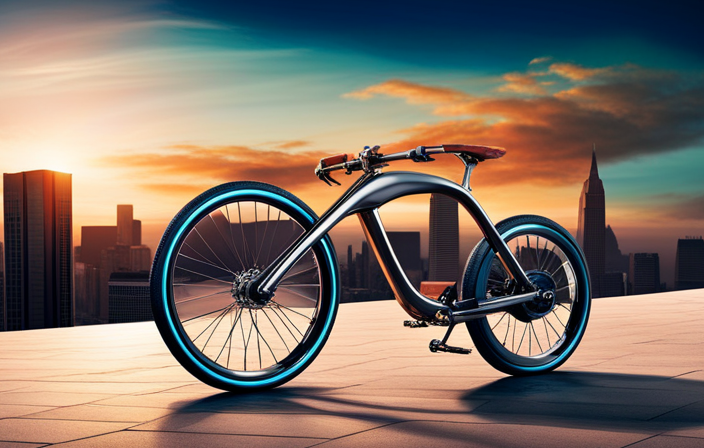
 Electric Bike3 months ago
Electric Bike3 months agoHow To Turn Your Bike Into An Electric Generator
-
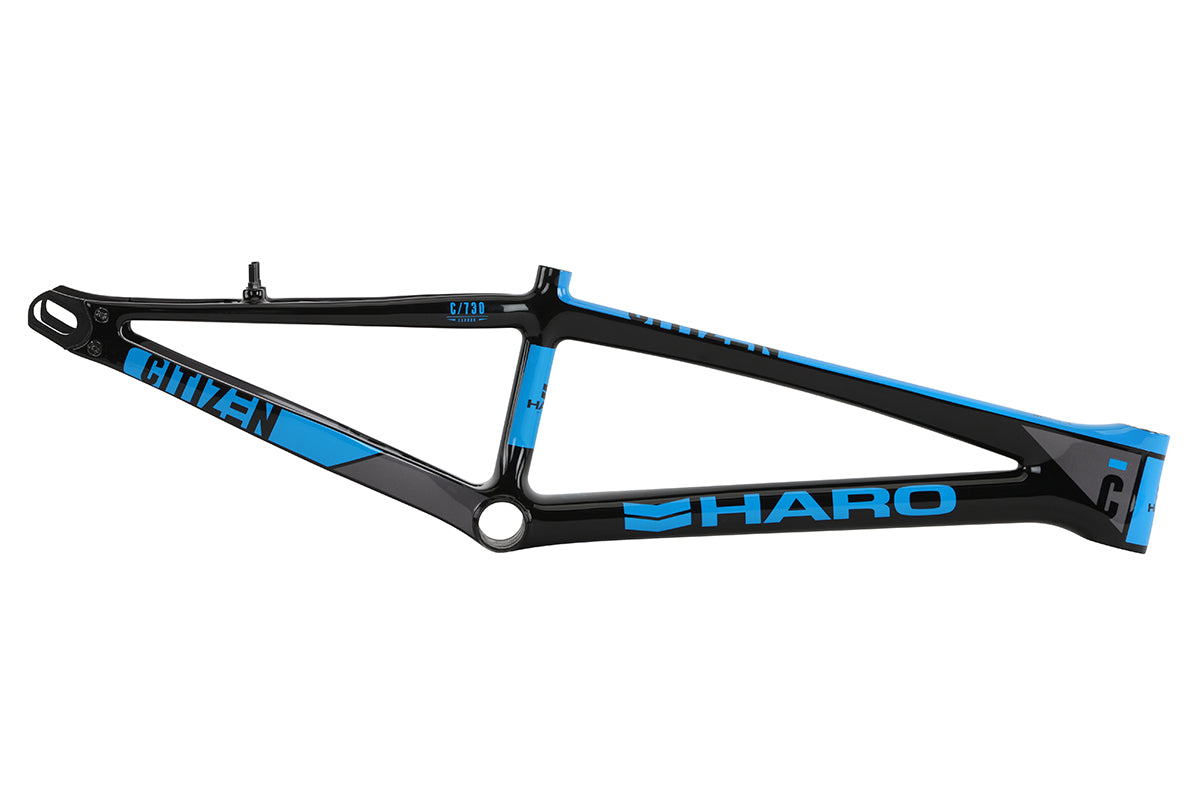
 Bike2 months ago
Bike2 months agoAdvantages and Disadvantages of a Carbon Fiber Bike Frame
-

 Beginners Guides2 months ago
Beginners Guides2 months agoA Guide to Right Hybrid Bike Posture: How to Sit on the Bike for Optimal Performance
-
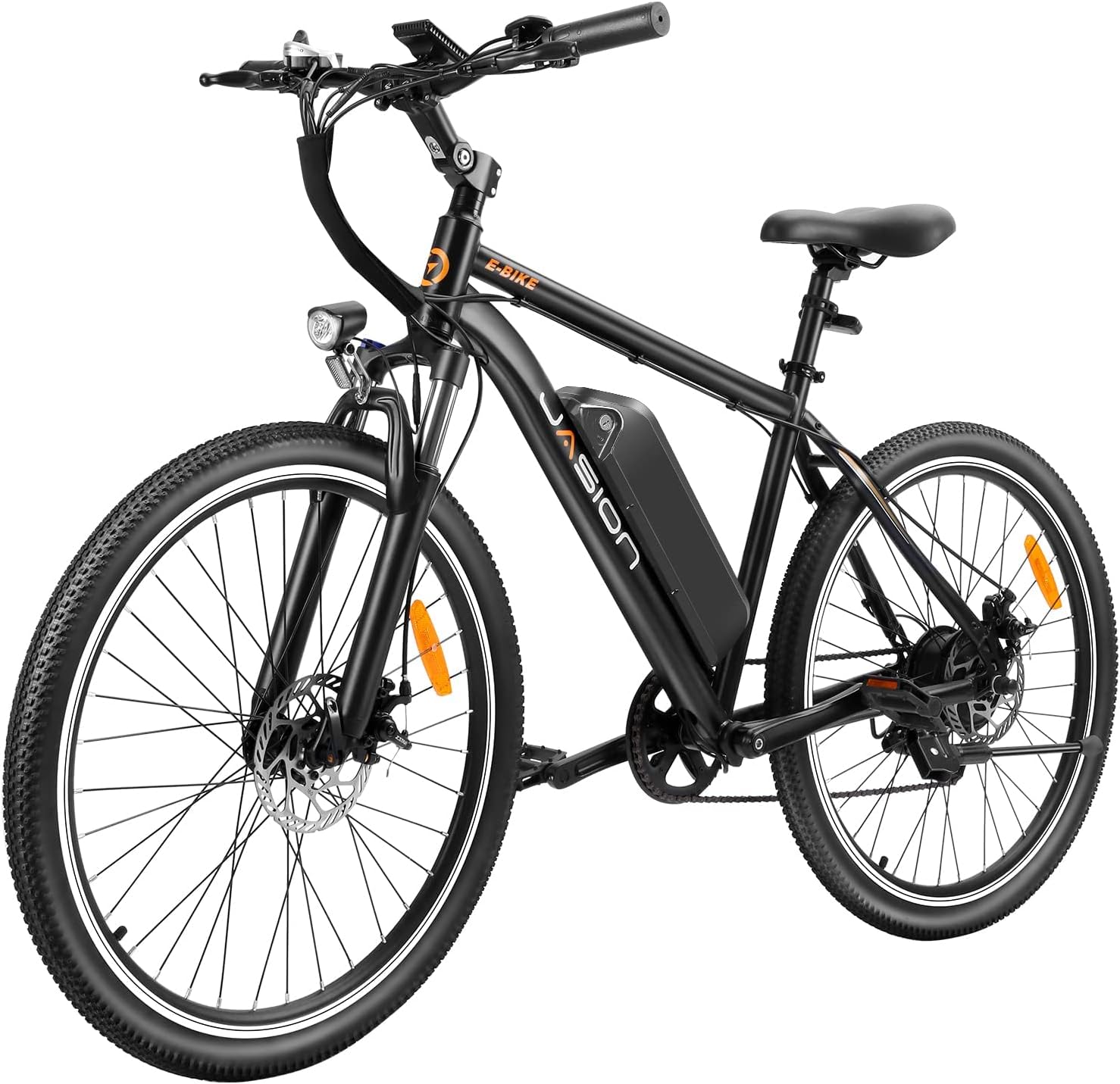
 Vetted3 months ago
Vetted3 months agoJasion EB5 Electric Bike Review: Commute Mountain Bike for Adults
-
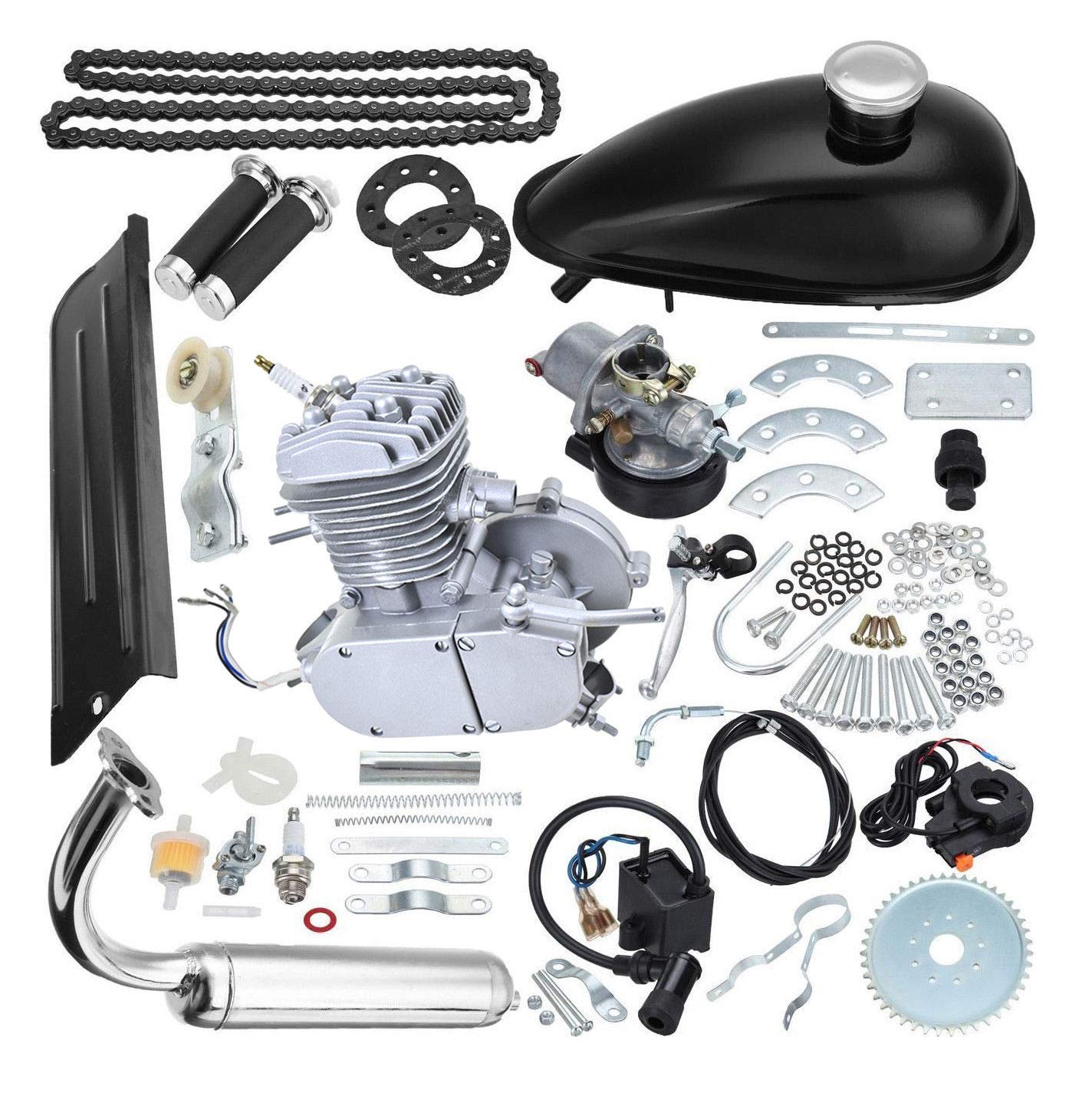
 Vetted3 months ago
Vetted3 months agoReview: 80CC Motorized Bicycle Gas Engine Kit with Performance Carburetor
-
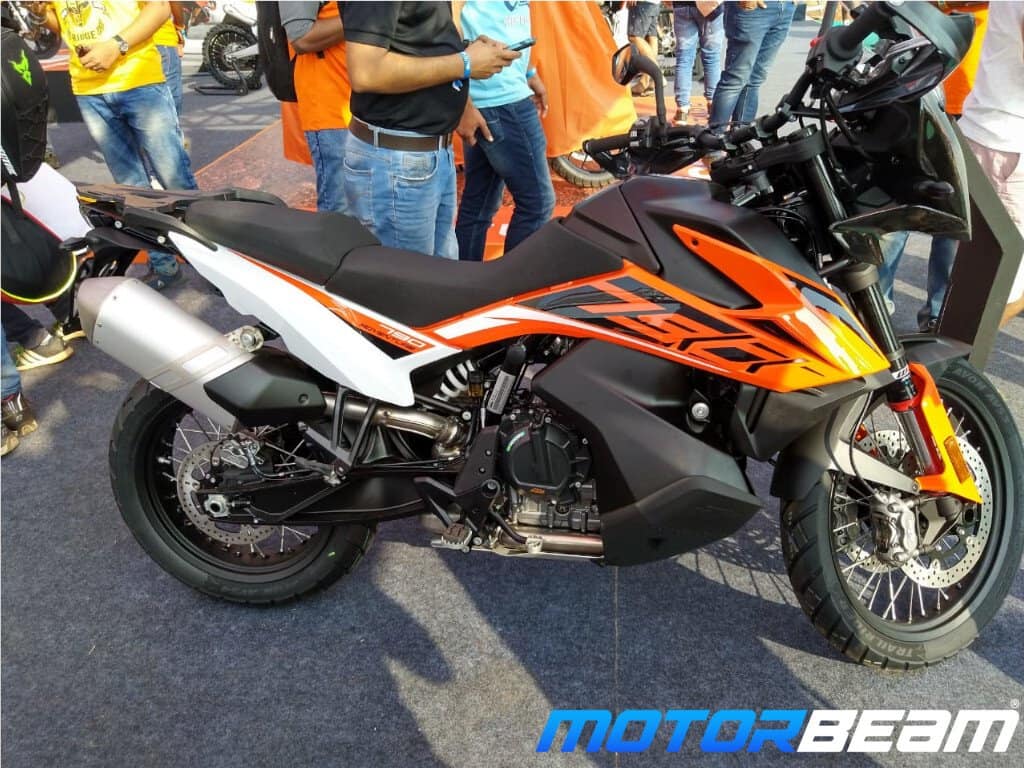
 Beginners Guides2 months ago
Beginners Guides2 months agoWhere Are KTM Motorcycles Made?
-

 Vetted3 months ago
Vetted3 months agoFREESKY Electric Bike Review: 1000W Motor, 48V Battery, Full Suspension
-

 Electric Bike3 months ago
Electric Bike3 months agoHow To Program Electric Bike Controller For More Speed
